|
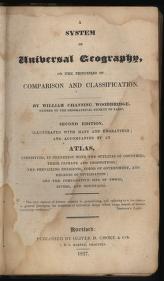
"Universal Geography, Ancient and Modern: Comparison and Classification"
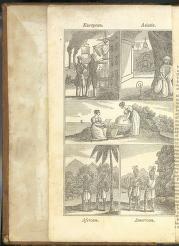
"A Practical System of Modern Geography"
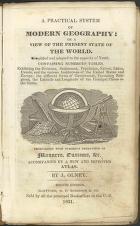
"A Practical System of Modern Geography: or View of the Present State of the World."

"A System of School Geography"

"Rudiments of Geography"
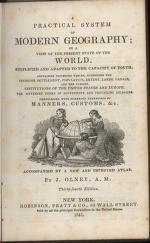
"A Practical System of Modern Geography"
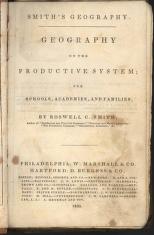
"Smith's Geography on the Productive System; for Schools, Academies, and Families"
|
Summary and Objective
After predicting similarities and differences between early American textbooks and those of today, students will view geography textbooks from the 1820s-1840s. Students will evaluate the textbooks in order to understand that works presented as "factual" may still contain inaccurate information, bias, and stereotypes. Students will then discuss the overall educational value of these textbooks and predict how American perspectives on race presented in these documents might have influenced government policies regarding Native Americans and African Americans.
Teaching Plan
Step 1.
Before starting this activity, ask students to predict what differences they might expect to find in a geography or history textbook from the early 1800s compared to those published today. Also ask students to discuss what they believe the purpose of textbooks should be. Should textbooks, for example, promote a certain perspective, such as patriotism or skepticism, or try to remain totally objective? It would probably also be beneficial to hold a class discussion on what the terms "bias" and "stereotype" mean.
Step 2.
This activity could be done as a homework assignment if students have Internet access at home or as an in-class activity with a partner or a small group. Explain to students that they will be looking at some actual geography textbooks from the early 1800s and evaluating them for accuracy, bias, stereotypes, and overall educational value.
Step 3.
Click "Rudiments of Geography". Note the title, place, and date of publication, and any examples of bias, stereotypes, or inaccurate information you find in this textbook.
Step 4.
Click "Universal Geography, Ancient and Modern: Comparison and Classification" and view the image titled, "Races of Men" on page 165. According to the illustration, which race are you to believe is the most civilized and why?
Step 5.
Click the frontispiece of "A System of School Geography". According to the artist, which characteristics make a group of people civilized or uncivilized?
Step 6.
Click "Smith's Geography on the Productive System" and view the frontispiece. What characteristics seem to make a group of people barbarous, half civilized, civilized, or enlightened? Now read pages 108 and 109. How do the people of New England view themselves? Do you think that this view could be bias? Why or why not? Read page 185 to find out how Greenlanders were described.
Step 7.
You will find links to three different editions of "A Practical System of Modern Geography" (1828, 1831, and 1841). As you view these different editions, look for examples of bias and stereotypes, not only regarding different ethnic groups, but also different regions of America. What do you think the author means when he uses the term "healthy"? If southerners printed their own textbooks, what stereotypes of northerners do you think they might include? What predictions does the author make about the western territories? Is there any evidence that the author of this textbook was influenced by the concept of "Manifest Destiny"?
Step 8.
Questions to discuss: What is the educational value of these textbooks? Do you think the views reflected in these textbooks could have influenced the racial views of the people who read them? If so, was it positive or negative? Could the racial and regional views held by Americans have made it more difficult to find positive ways of resolving differences between the diverse groups in our nation? How big a problem do you think bias, stereotypes, and racism are today? Students can also investigate their own textbooks to look for examples of bias or inaccuracy.
|




